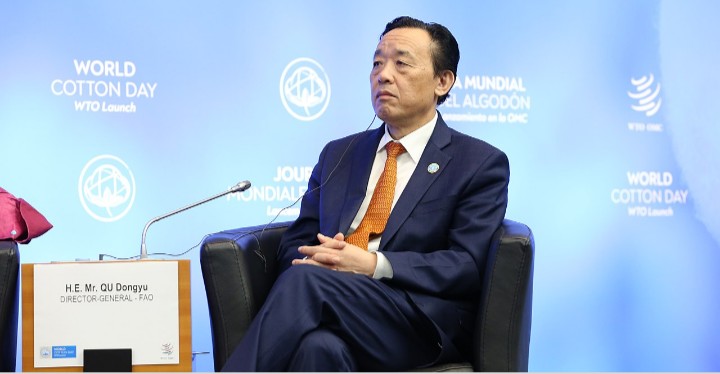|
Getting your Trinity Audio player ready…
|
Irrigated land has accounted for 85 percent of the increase in global cropping area over the past decade, according to Qu Dongyu, Director-General of the Food and Agriculture Organization of the United Nations (FAO).
Dr. Qu said droughts and associated water shortages around the world this year have underscored the importance of finding solutions to global food security.
He was speaking at the Act on Water to Feed the World: Sustainable Water Allocation to Create a Food Secure World event on the sidelines of the 77th UN General Assembly being held in the US.
“Clean and plentiful water is critical for agriculture and for ending hunger,” Dr. Qu said.
He stressed that as agriculture already accounts for more than 70pc of global freshwater withdrawals, the sector needed to produce more nutritious food with less water, and with fewer inputs overall, to avoid negative environmental impacts.
The Netherlands’ Minister for Foreign Trade and Development Cooperation Liesje Schreinemacher hosted the event in a bid to explore possibilities and identify ways to improve alignment between water policy, allocation, and management under the aegis of food security goals.
As a result, Ms Schreinemacher announced an additional US$5 million from The Netherlands for FAO’s WaPOR project to support the water action agenda to make food and drinking water available to all ahead of the UN 2023 Water Conference that will be hosted by The Netherlands and Tajikistan.
Finding solutions
FAO works with its Members and partners to find solutions to improve water use.
Among FAO’s projects are modernisation plans for large-scale irrigation schemes to make rain-fed agriculture more resilient and productive, as well as technical work to support sound water policies and investments in infrastructure and research.
“Data and monitoring are key for information sharing, effective response, and efficient planning,” Dr. Qu said.
One of FAO’s ongoing initiatives is the WaPOR project in Africa and the Near East, which monitors Water Productivity through Open Access Data.
The system uses satellite remote sensing to monitor water use and crop production on a granular scale, providing information that helps policymakers make informed decisions, prepare for drought, and optimize farm outputs.
“WaPOR is a digital public good that can be used in irrigated areas to calculate where water productivity is high or low, allowing targeted action. It shows how big data can benefit smallholder farmers,” the Director-General said.
He expressed his appreciation to The Netherlands’ Government for its support of the project.
Additional funding will allow for a global expansion of the database as well as the addition of two new partner countries in Asia and Latin America to the current 10 countries in Africa and the Near East.
“We need to do more,” Dr. Qu said, and stressed the need to ensure that innovative technology, science, innovation, and good practices were freely available to farmers everywhere.
Source: Grain Central
